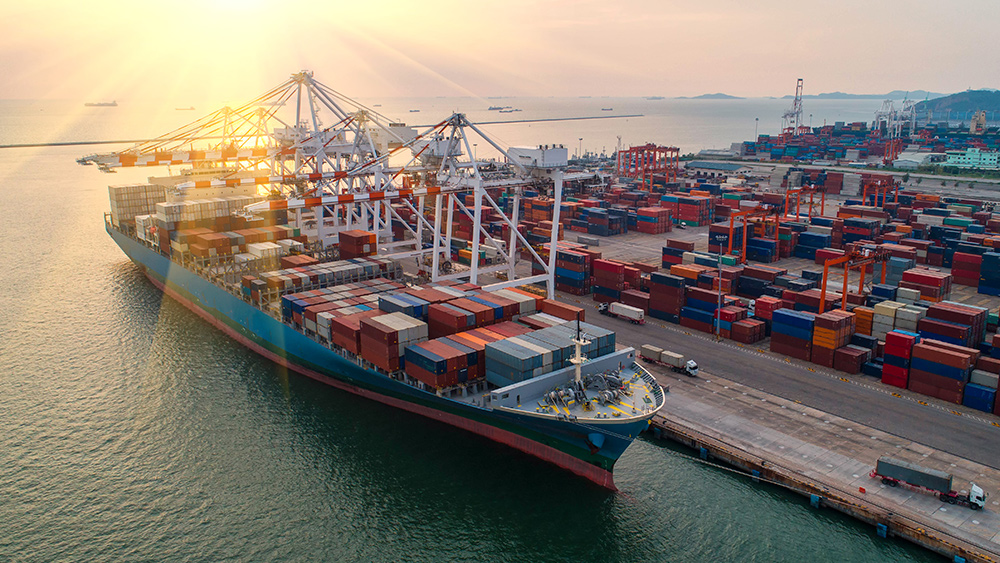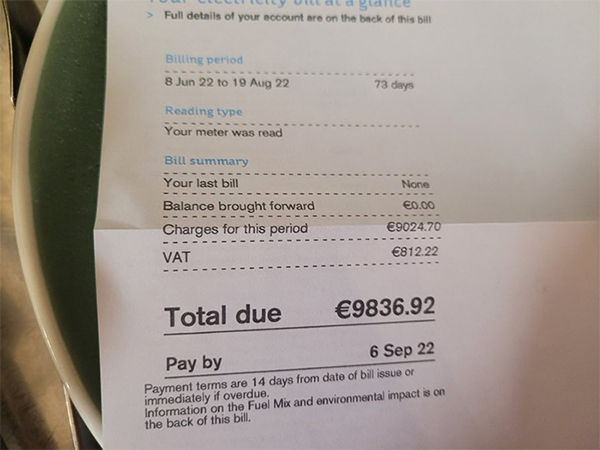The tide has turned: Shipping lines no longer interested in renting container vessels
09/27/2022 / By Belle Carter

Rates for container ship rentals are now in a nosedive, as per freight indexes.
The cost of transporting goods in containers has steadily declined since reaching its highest point before the end of 2021. “What is astonishing is how quickly the market appears to turn,” ship brokerage Braemar said. “Only some weeks ago, charter rates appeared stable and operators were still securing forward tonnage at historically high rates on long-term periods.”
Liner sentiment toward the freight market’s future supply-demand balance may have started to deteriorate as companies appeared to be suddenly less interested in renting container ships. And whenever they rent ships, the contract fee is lesser and they lease for shorter periods. (Related: Consumer demand collapses as global economy IMPLODES, factories closing doors, freight demand plummets.)
The Harpex index, which reflects the worldwide price development of the charter market for container ships, hit an all-time high of 4,586 points in late March and in the low 4,400s until late July. As of September 16, it slumped to 3,095 points, crumbling by 30 percent in just eight weeks and 18 percent compared to the previous week. The Harpex is now back to low July 2021 levels, although still four to five times higher than before the Wuhan coronavirus (COVID-19) pandemic era.
Braemar’s BOXi charter-rate index was at 317 points, plummeting by 30 percent in the past week alone. The said index was at 580 points in late July, falling 45 percent in just six weeks.
The brokerage Clarksons’ index recently reflected a 26 percent decline. Clarksons Securities analyst Frode Mørkedal said: “Softening has been most obvious in the feeder sector in recent weeks. But the consequence of dropping freight rates is now further eroding charter hire rates in the bigger size ranges, even while tonnage availability remains constrained.”
Container, vessel demand slowdown due to weaker cargo movement
According to a research group, while freight rates have fallen due to the easing in supply chain disruptions caused by the pandemic backlog, a lot of the slowdown in container and vessel demand was due to weaker cargo movement.
“Much reduced port congestion level, along with weaker cargo arrivals, was one of the major reasons behind the significant decrease in freight rates,” financial research publisher company S&P said in a note. “Based on the expectation of weaker trade volume, we do not expect extremely high congestion again in the coming quarters.”
S&P added freight rates for containers and vessels carrying raw materials and bulk goods have plunged over the past three months.
The company added: “Due to the seasonality of the market, dry bulk freight rates would typically peak in the third quarter; however, according to S&P Global Market Intelligence’s latest dry bulk freight market outlook, the second quarter would likely be the peak of 2022.”
The firm’s Freight Rate Forecast models have also predicted the Baltic Dry Index, which is expected to fall up to 30 percent for the year before recovering slightly in 2024. The said index is a barometer for the price of moving major raw materials by sea.
The said forecast underscores the growing risks of a global recession as consumer demand retreats amid the soaring cost of living and inflation.
S&P said that any changes in China’s COVID-zero policy or if there will be ceasefire agreements between Russia and Ukraine could lift dry bulker freight rates again, but any further slowing in the demand for goods and consumption would push rates lower.
“Although we expect some seasonal improvements in the dry bulk market in coming months, a volatile path to lower rates is expected in the near term due to slower-than-expected economic growth with continued weakness in mainland China’s real estate sector as well as the absence of high congestion,” said Daejin Lee, lead shipping analyst at S&P Global Market Intelligence.
Watch the below video that talks about plummeting freight demands.
This video is from the Health Ranger Report channel on Brighteon.com.
More related stories:
China’s economy showing signs of FAILING as exports slow down, shipping industry weakens.
ALL railroad freight to potentially halt on July 18 due to national “labor strike.”
Sources include:
Submit a correction >>
Tagged Under:
Bubble, charter index, Collapse, container ships, economic collapse, economy, exports, freight index, global supply chain, inflation, market crash, money supply, ocean freight, recession, risk, shipping, supply chain, supply chain crisis, trade
This article may contain statements that reflect the opinion of the author
RECENT NEWS & ARTICLES
COPYRIGHT © 2018 MONEYSUPPLY.NEWS
All content posted on this site is protected under Free Speech. MoneySupply.news is not responsible for content written by contributing authors. The information on this site is provided for educational and entertainment purposes only. It is not intended as a substitute for professional advice of any kind. MoneySupply.news assumes no responsibility for the use or misuse of this material. All trademarks, registered trademarks and service marks mentioned on this site are the property of their respective owners.




















